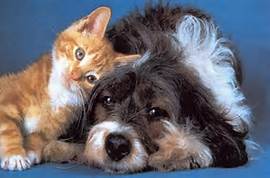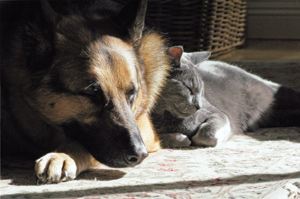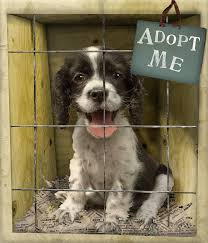 February Westminster holds its famous dog show. I love dogs and as an animal advocate, I love all animals. Of course I’m very bonded to dogs having been the guardian of three over the span of 19 years, so I used to love watching all the beautiful dogs of different breeds on TV during the telecast of the show. But, I now know that while it is a “Dog Show”, it really is more about “People Big Business”.
February Westminster holds its famous dog show. I love dogs and as an animal advocate, I love all animals. Of course I’m very bonded to dogs having been the guardian of three over the span of 19 years, so I used to love watching all the beautiful dogs of different breeds on TV during the telecast of the show. But, I now know that while it is a “Dog Show”, it really is more about “People Big Business”.
Why do I say this? Well, aside from the prize awards given to winners, there are big advertising bucks, hundreds of dog products marketed and sold at the exhibit hall, hell, even my N.Y.C. local non-for profit Veterinary Hospital has a booth drumming up business. But aside from these and more, breeders bring their puppies for sale at high prices, which are sold out usually within the first day bringing in big bucks. Let me say upfront that I now consider it unethical to breed more dogs while beautiful, precious dogs, puppies, mixed breeds and purebreds are in shelters, rescue groups, foster homes, all needing love and forever homes. Millions that don t get adopted are killed.
I also wonder, can these show dogs really enjoy being shown? Do they enjoy traveling almost constantly locally and nationally around the country? Do they enjoy being groomed constantly, especially the long haired breeds, who require much cutting, trimming, brushing, blow drying etc.? Can this really be what a dog enjoys? Okay, we humans may call it pampering, but if they could speak our language would they tell us they enjoy standing still for hours being brushed and combed? While many of them also live in the home as beloved companions, the majority of all show dogs and dogs bred to show do not. Do we know what goes on behind the scenes for the vast majority of show dogs?
It takes a lot of work and training to show a dog in the ring, costs a lot of money, and a large investment to breed show dogs so let me add, it means breeding many dogs to get one or two that have potential to win in a show, whether local, regional or national.
What is the life of a show dog and particularly the litters bred to show? And what happens to all the dogs that don’t make it because they don’t fit the physical specs, or they don’t have that personality and temperament to be in the ring? I’m not referring to the litters that the breeders bring to the show purposely to sell. This in part is what pays for the large amount of money they must lay out to show their dogs. But what about the dogs bred, trained and shown that do not have what it takes to be entered into more competitive shows? How are they living in the meantime? Do they have fun, do they get to play, and do what comes naturally and instinctually? What are their lives like for the first few years?
I cannot answer all these questions of course for several reasons since it does depend on the breeder, but their lives are not what you would think. And what I can ask again is that with so many millions’ of precious loving healthy dogs including purebred, purebred puppies, and mixed breeds in shelters, rescue groups, foster homes, and sanctuaries that need homes, should we really breed millions more for profit?
“For Every Dog Bred is Another Dog Dead” was a campaign slogan used by an animal welfare group in Florida (ARRF) and it is a slogan that I will never forget.
Again, while I cannot answer all the above questions about the life of each show dog, these questions and more came up from my own experience and talking to people who know behind the scenes. I was told by an insider, that she has given medical care to dogs bred to show, with 18 dogs kept in kennels, not as companions. I can also share a few things about my dog Sophie, bred to be a show dog. Sophie was bred to be a show dog, trained to show, and shown, but for one reason or another, was not suited to do well. The reason my guess is, because of her shyness, a personality trait that is not suited for show dogs. But Sophie was one of the luckier ones to be given to a wonderful rescue group that rescues Poodles and Poodle mixed breeds. Not all such dogs bred to show are that lucky. Yes, I adopted my Sophie from a rescue group 3 years ago after losing one of my precious companions at the age of 10. Sophie could not be sold, since she was 2 years old.
She is indeed a beautiful Toy Poodle. But I did not adopt her because of her outward beauty, but knowing I would only adopt, I contacted a Poodle rescue group, and opportunity knocked. Sophie needed a home, and I had experience knowing that I was able to provide for her needs. So, she came home with me Christmas Eve 2012. Because she was 2 I knew they were would be some adjustments, different than bringing home a puppy, but there were some I didn’t expect. And there were some behaviors that led me to learn more about the life of dogs bred for show. While I can’t tell all here since I’m not writing a book, there are a few behaviors that surprised me although my first clue came when I was told that she didn’t live a very good life.
Sophie didn’t only not know that our walks were for relieving herself, she also didn’t know that they were meant for her to use one of her most important senses, the sense of smell. It took a couple of months of taking her for walks for her to do what comes naturally to dogs, stop and smell all the scents on route. On our walks, she walked as though we were in the show ring, her prancing alongside me head up at all times. In fact, I practically had to break into a jog to keep up with her pace. Not a fun walk, but like we were always training in the ring.
Sophie was a picky eater I was told, and indeed when I brought her home she wouldn’t eat much, nor any human food even a little piece of prized chicken. Toy Poodles should weigh about 7 pounds but little Sophie weighed just 4. I’ve learned that not only are the dogs being trained to show not given any variety of food, but the majority are purposely kept underweight. Well, I am pleased to say with the right food, she eats all her food and the bowl looks as though it never had a speck of food in it. She now weighs in at a healthy almost 7 pounds.
Sophie wasn’t just shy either, she seemed to not know how to play, either with me or other dogs even after becoming familiar with them. She didn’t pick up any toys for weeks, and it took a couple of months for her to really begin to play. One well- known signal that a dog wants to play is the bow position, which comes naturally to dogs given play time. I cherished the day she did the play position, running around then with a toy.
Shyness a personality trait partially genetic, is also influenced during a critical period in early puppyhood. The majority of dogs bred to show I’ve learned, are soon kept in kennels lacking socialization and play with other dogs, and exposure to different people and situations. Sophie was very shy around people too, but more than shy, she exhibited fear. While dogs being trained to show are handled by breeders, handlers, and groomers, they generally do not come in contact with other people. While I would never try to force her, I have worked on conditioning her to not be afraid. I always ask people with and without dogs to ignore Sophie and allow her to approach rewarding her with praise when she does showing her people are a good thing. And over time, this has helped tremendously since Sophie not only approaches more dogs and people, but she does so with a happy tail. People that I have introduced Sophie to in my neighborhood tell me how much she has changed. She’s a different dog they say. And indeed she is.
These are just a couple of behaviors, that while not the type of abuse we hear about, but abuse nevertheless. Keeping dogs in kennels constantly, training them to only walk a certain way with little exposure to play, and depriving them of their natural instincts until such time they exhibit no potential to make money either showing or breeding, is about making money and is abuse. It is also in my opinion, again unethical to breed and promote breeding while we put to death millions of dogs.
Sophie is no longer a show dog, and I’m sure if she could verbalize, she would tell me how happy she is to have left that life behind. In fact, she doesn’t have to say it, I can see it. And I will say it again and again that it is my joy, reward and luck to have adopted her. Adopting, changing her life to become a happy playful pup has brought me more joy that I ever expected.
“According to HSUS & Maddie’s Fund and The Ad Council” there are about 17 million people in the market for companion animals this year (Stated for 2013). Only about a quarter of them will get a dog or cat from a rescue or shelter”. (1)
Number of Companion Animals entering shelters nationally each year 5 million
• Number of Companion Animals euthanized in shelters each year 3.5 million
• Number of dogs euthanized in shelters each year 60%
• Number of cats euthanized in shelters each year 70%
• Total percentage of purebred dogs in shelters 20% (2)
Although I love the dogs, I certainly no longer love to watch Dog Shows.
Adopt and Save a Life!
1. Pacelle, Wayne; The Beagle Has Landed, A Humane Nation Blog 6/24/2013
2. American Humane Society, Born Free U.S.A., Pet Finder as of 8/22/2012








